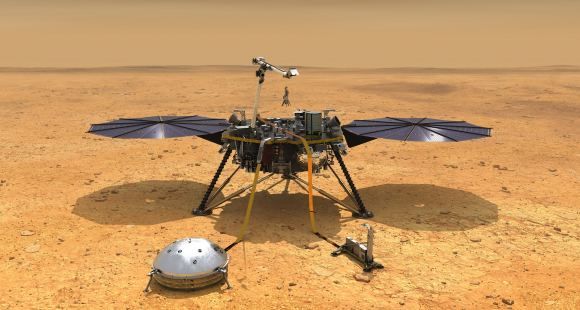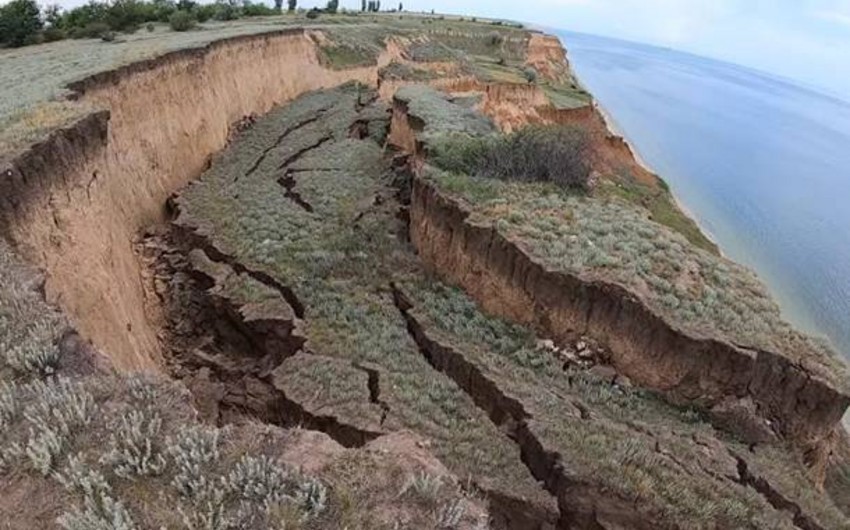Billions of years ago, Mars was a much different place than it is today. Its atmosphere was thicker and warmer, liquid water flowed on its surface, and the planet was geologically active. Due to its lower gravity, this activity led to the largest volcanoes in the Solar System (Olympus Mons and the Thetis Mons region) and the longest, deepest canyon in the world (Valles Marineris). Unfortunately, Mars’ interior began to cool rapidly, its inner core solidified, and geological activity largely stopped. For some time, geologists have believed that Mars was essentially “dead” in the geological sense.
However, recent studies have provided seismic and geophysical evidence that Mars may still be “slightly alive.” In a recent study, scientists from the University of Arizona (ASU) challenged conventional views of Martian geodynamic evolution by discovering evidence of an active mantle plume pushing its way through the crust, causing earthquakes and volcanic eruptions. Combined with some serious marsquakes recorded by NASA’s InSight lander, these finding suggests that there is still some powerful volcanic action beneath the surface of Mars.
The study was conducted by Adrien Broquet, a postdoctoral research associate with the ASU Lunar and Planetary Laboratory (LPL), and Jeff Andrews-Hanna, an associate professor of planetary science at the LPL. Their paper, “Geophysical evidence for an active mantle plume underneath Elysium Planitia on Mars,” recently appeared in Nature Astronomy. As they indicate in their paper, their research presents multiple lines of evidence that reveal the presence of a giant active mantle plume within Mars’ mantle.
The research team focused on Elysium Planitia, a broad plain near the Martian equator south of the Elysium volcanic region – the second largest on Mars after Tharsis Mons. Unlike other volcanic regions that have been dormant for billions of years, Elysium Planitia has young features (fissure-fed flood lavas) that indicate volcanic activity between 2.5 and 500 million years ago. In previous studies, Andrews-Hanna and the LPL research group examined the Elysium Planitia region and found evidence of a small eruption that took place just 53,000 years ago, the most recent in Martian history.
On Earth, volcanism and earthquakes are largely associated with the endless cycle of convection and spreading of tectonic plates, which force hot magma to the surface. But in some cases, volcanism results from mantle plumes, where magma pushes against the surface and stretches the crust, creating raised areas and fault lines. Eventually, the plume will erupt as a giant flood of molten basalt rock that covers a wide area and creates volcanic plains. Since Mars does not experience plate tectonics, researchers began to consider whether the activity in Cerberus Fossae resulted from a mantle plume.
“We have strong evidence for mantle plumes being active on Earth and Venus, but this isn’t expected on a small and supposedly cold world like Mars. Mars was most active 3 to 4 billion years ago, and the prevailing view is that the planet is essentially dead today.
“A tremendous amount of volcanic activity early in the planet’s history built the tallest volcanoes in the solar system and blanketed most of the northern hemisphere in volcanic deposits,” Broquet said. “What little activity has occurred in recent history is typically attributed to passive processes on a cooling planet.”
Volcanism at Elysium Planitia has been traced to Cerberus Fossae, a region characterized by young fissures extending for 1287.5 km (800 mi). In a recent study, a research team from ETH Zurich revealed that the vast majority of marsquakes recorded by NASA’s InSight mission originated in this region. According to the researchers, the only explanation for this was the presence of volcanic activity within the past 53,000 years. While the cause was unknown, another study based on InSight data showed that these marsquakes likely resulted from shifting magma.
To test this possibility, Andrews-Hanna and his colleagues applied a tectonic model to the area that showed how a plume measuring about 4,025 km (2,500 miles) in diameter was the only mechanism that could explain Cerberus Fossae. Other evidence bolsters this theory, including how the surface has been raised by more than 1.5 km (1 mile) – making it one of the highest points in the Northern Lowlands. Moreover, analyses of subtle variations in Mars’ gravity field indicate that this uplifted area is supported from deep within the mantle, consistent with a mantle plume.
Finally, measurements of the impact craters in the region showed that their floors are tilted toward the plume, indicating that something pushed the surface upwards after the craters formed. As Broquet explained, these findings pose a significant challenge for thermal evolution models used by planetary scientists to study planets:
“In terms of what you expect to see with an active mantle plume, Elysium Planitia is checking all the right boxes. This mantle plume has affected an area of Mars roughly equivalent to that of the continental United States. Future studies will have to find a way to account for a very large mantle plume that wasn’t expected to be there.
We used to think that InSight landed in one of the most geologically boring regions on Mars – a nice flat surface that should be roughly representative of the planet’s lowlands. Instead, our study demonstrates that InSight landed right on top of an active plume head.”
These findings will have significant implications for how scientists will interpret seismic data recorded by InSight, which has been probing the depths of Mars since 2018 to learn more about its interior structure, heat transfer, and geological evolution. The evidence it has gathered makes the increasingly strong case that the Red Planet (once thought dead) still has a beating heart. This is similar to how seismic measurements made by the Apollo astronauts revealed that the Moon’s core was molten, said Broquet.
These findings could also have implications in the search for past (and maybe even present) life on Mars. In 2005, the ESA’s Mars Express orbiter detected what could be a mass of ash-covered water ice 800 km (500 mi) by 900 km (560 mi) in size and 45 m (148 ft) deep. The ice is thought to be the remains of flooding that originated from the Cerberus Fossae fissures 2 to 10 million years ago, though the cause remains unknown. Based on these latest findings, the heat from the same magma plume may have also melted ice deposits and triggered floods.
As Andrews-Hanna added, heat from this plume could also sustain chemical reactions that are essential to life, thus bolstering the theory that microbes may still exist beneath the surface of Mars today. “Microbes on Earth flourish in environments like this, and that could be true on Mars, as well,” he said. “Knowing that there is an active giant mantle plume underneath the Martian surface raises important questions regarding how the planet has evolved over time. “We’re convinced that the future has more surprises in store.”





.jpeg)




